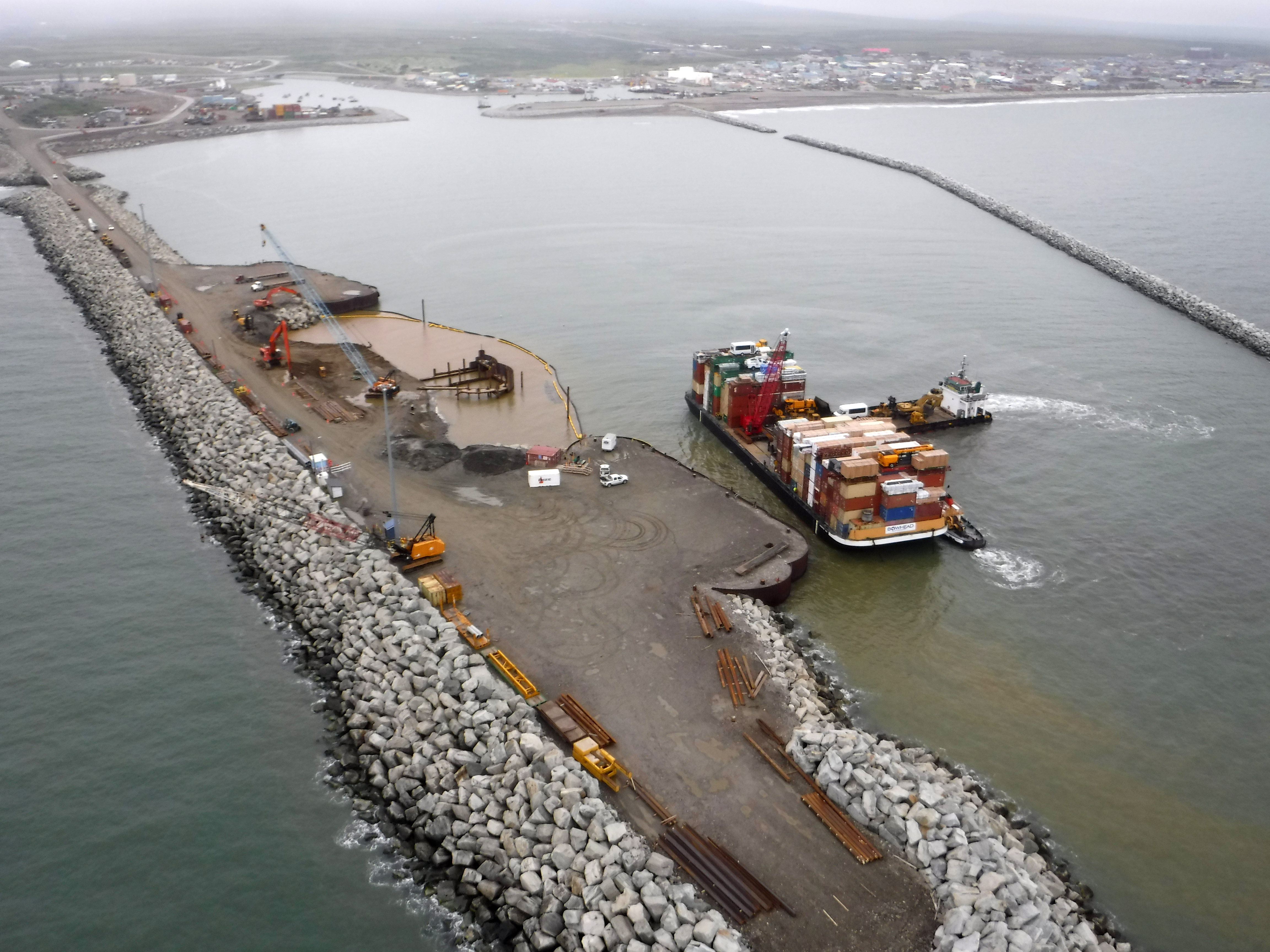Nome mayor touts his city’s infrastructure, services as a head start in the Arctic port race
“I don’t want to pooh-pooh others, but I think we’re a lot more ready.”

Nearly three years ago, Royal Dutch Shell yanked its ambitious project to drill for oil offshore in the icy Chukchi Sea, progress toward developing a top-quality Arctic Alaska port stalled. The U.S. Army Corp of Engineers, which issued a draft version of a study into potential port sites, put that project on the back burner.
Now, work on port planning has resumed, and the mayor of Nome is hopeful that his community will emerge at the first full-service deep-draft U.S. Arctic port.
The city and the Corps have entered into an agreement to share costs of a feasibility study about how to meet what Nome Mayor Richard Beneville believes is a pressing need.
[A new study rekindles hope for Nome port expansion]
In past years, Beneville said, he had hoped that western Alaska communities could speak “with one voice” and work together to develop a series of ports serving Arctic vessel traffic. But that multi-community approach now seems too slow, he said.
“The problem is we’ve got to get going. The climate change has outstripped our ability to keep up with it,” he said.
Right now, Nome has a big head start on the infrastructure needed to support an Arctic port. Nome is already a hub community with an existing port that serves dozens of villages in the region, an airport, a new hospital, stores, hotels and other features that could service ships and port activities.
“I don’t want to pooh-pooh others, but I think we’re a lot more ready,” he said. “Rather than having us start from scratch, I would rather see us build on current infrastructure.”
Vessels sailing in and out of the Bering Strait are already relying on Nome, even though the harbor’s waters are shallower than what is needed for a full-service deep-water port, Beneville said.
Thirty years ago, Nome’s port serviced about 40 or 50 vessels a year. Last year, about 785 came through, he said. “The growth has been explosive,” he said.
Even with the new Nome-Corps agreement, there are big challenges ahead. Finding the money to do necessary work is probably at the top.
To bolster the case for government funding, a resolution that urges much more federal action to build Arctic marine infrastructure is moving through the Alaska state legislature. The non-binding resolution, HJR 33, cites both the national security concerns about more marine activity in the Arctic and the potential for Alaska economic development to take advantage of that.
The resolution calls for Alaska’s Congressional delegation and other federal officials to help establish a Coast Guard port in the Alaska Arctic and other infrastructure that will help make the area safer. The legislature “recognizes the urgency of developing key infrastructure and defense capabilities, considering the investments other nations have committed to the region as well as the increased amount of time needed for those types of projects because of the extreme weather of the region,” says the resolution, which has 16 co-sponsors, including the Democratic House majority leader and the Republican Senate president.
There is also a physical challenge of creating the deeper waters needed to allow Nome to service all types of vessels.
Nome’s harbor waters are no more than 22 feet deep. Of all potential Arctic or near-Arctic ports in Alaska, only Port Clarence has the natural deepwater depth that would be needed by many vessels, Beneville points out. But Port Clarence, now an abandoned Coast Guard navigation station to Nome’s north, has no residents, limited infrastructure and no roads leading outside.
In contrast, existing harbors can be made deeper, which is what Nome intends to do, Beneville said. “We want to dredge to about 40 feet,” he said. “Dredging is something that the Corps of Engineers does. I don’t see why we can’t do it.”
The feasibility study that the city and the Corps are planning is expected to cost $3 million. Nome has already committed $1.5 million to the project.